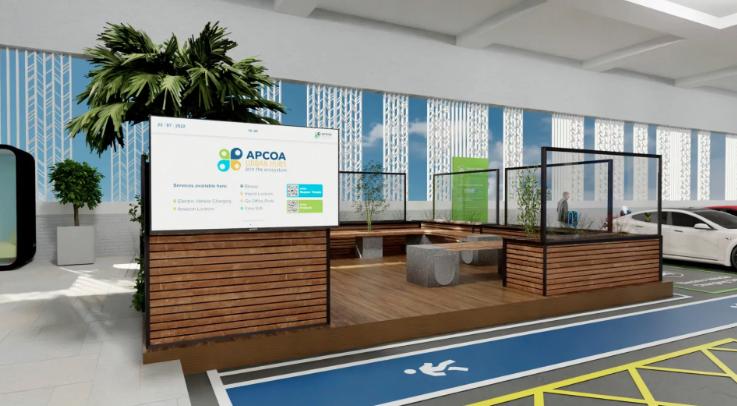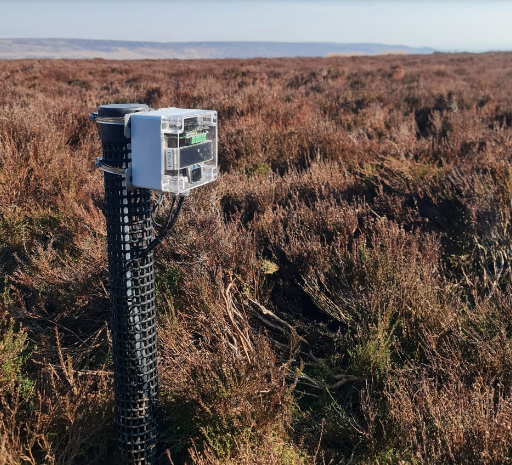Rethinking the Road to Sustainability
Left-field innovations powering sustainable mobility in Europe
When the conversation turns to sustainable transport, and it invariably does these days, it is remarkably easy to focus on the familiar topics: electric vehicles, bike lanes, the electrification of public transport… but beneath the surface of policy papers and city planning documents, a quiet revolution is taking shape - one powered not just by cleaner energy, but by bold, left-field thinking. Without resorting to cliché, we are talking about thinking “not inside the box”.
Across Europe and the UK, a range of unconventional ideas are reimagining what mobility can look like. Some seem plucked from science fiction; others draw inspiration from centuries-old practices. All share one thing: a commitment to drastically reducing our environmental footprint while transforming how we move.
Across Europe and the UK, a range of unconventional ideas are reimagining what mobility can look like. Some seem plucked from science fiction; others draw inspiration from centuries-old practices
Hydrogen Canal Barges: The Return of the Inland Waterway
In the UK and parts of Western Europe, canals were once the arteries of the industrial age. Now, innovators are bringing them back - but this time powered by hydrogen.
Start-ups such as the Zero Emissions Shipping Technology Association (ZESTAs) in Scotland are collaborating with logistics companies to develop hydrogen-powered canal barges that transport goods through urban centres. These barges, often autonomous or semi-autonomous, bypass congested roads entirely and emit nothing but water vapour. In cities like Amsterdam and Ghent, pilot projects are underway to integrate canal-based freight into city supply chains, relieving road traffic and slashing emissions.
Not only are these barges eco-friendly, but they also reimagine forgotten infrastructure - turning neglected canals into carbon-free cargo corridors.
In cities like Amsterdam and Ghent, pilot projects are underway to integrate canal-based freight into city supply chains, relieving road traffic and slashing emissions
Mobility Hubs in Places You Wouldn’t Expect
Mobility hubs - centralised points where users can switch between bikes, buses, scooters and trains - are gaining ground across European cities. But in the UK, some local councils are going a step further by transforming underused spaces into micro-hubs for sustainable transport.

In Northumberland, a disused petrol station has been turned into a solar-powered e-bike and e-scooter charging depot. In Leeds, parts of multi-storey car parks are being retrofitted as “urban mobility decks” where commuters can park bikes, rent EVs, or pick up cargo e-bikes.
These creative reuses of brownfield sites not only reduce emissions but also change the visual and cultural landscape of urban mobility.
In Northumberland, a disused petrol station has been turned into a solar-powered e-bike and e-scooter charging depot. In Leeds, parts of multi-storey car parks are being retrofitted as “urban mobility decks”
Solar Roads: Recharging as You Drive
While solar panels on rooftops are now mainstream, some European innovators are embedding them directly into roads. France and the Netherlands have led early trials with photovoltaic surfaces that generate electricity as vehicles pass over them. Though still expensive and technically challenging, the idea has sparked renewed interest thanks to improved durability and lower-cost materials.
In the UK, Oxford-based and Statkraft-owned SolarCentury are working on integrating solar-embedded roads and car parks with EV charging infrastructure. The idea is simple but radical: turn every bit of road surface into a clean energy generator, helping power homes, businesses and the very vehicles that use them.
While critics note concerns around cost and wear-and-tear, pilot projects in Scotland and Germany have shown that solar surfaces can survive harsh weather and heavy loads when properly designed - a promising step toward mainstream adoption.
While critics note concerns around cost and wear-and-tear, pilot projects in Scotland and Germany have shown that solar surfaces can survive harsh weather and heavy loads when properly designed
Cargo Drone Corridors in Rural Wales
Drone deliveries often evoke images of urban rooftop drop-offs. But in rural Wales, drones are being trialled as a low-emission alternative for medical and small freight deliveries. The Caerphilly Drone Corridor, developed in partnership with the UK Space Agency and local NHS trusts, allows electric drones to transport vital medical supplies over long distances, avoiding the need for diesel-powered vans on winding rural roads.

These drones are silent, zero-emission, and able to navigate hard-to-reach areas where road access is limited or weather-dependent. If scaled, similar drone networks could become lifelines for remote communities across Europe, providing fast, clean delivery of medicine, mail, and goods.
The 15 Minute Village
The “15-minute city” - where all essential services are within a 15-minute walk or bike ride - is usually discussed in the context of notably forward-thinking large metropolises such as Paris or Barcelona. But some European villages are applying the same principles on a smaller, more radical scale.
In Totnes, Devon, local planners are experimenting with hyperlocal economies and mobility schemes where cars are discouraged in the town centre, replaced by shared e-bikes and electric shuttle pods. The goal: reduce reliance on regional travel and boost local economies while slashing emissions.
In Denmark, the village of Samsø - already a 100% renewable energy island - has piloted shared electric car pools, solar bus stops and an autonomous ferry to connect residents to the mainland sustainably. These examples challenge the urban-centric model of green mobility and suggest that rural communities could lead the next frontier of climate-friendly living.
In Denmark, the village of Samsø has piloted shared electric car pools, solar bus stops and an autonomous ferry to connect residents to the mainland sustainably
Living Infrastructure: Trees That Power Streetlights
Some innovations border on the magical. In Bristol and Rotterdam, bio-energy systems are being tested that convert the natural energy of tree root systems and soil microbes into electricity - enough to power LED streetlights or charge sensors.
A project known as Plant-e, originating in the Netherlands, has teamed up with local governments to install these living power systems in parks and nature reserves. The electricity generated isn’t vast, but the symbolic and educational value is immense: it’s a vision of a world where infrastructure not only coexists with nature but is literally powered by it.

Ultra-Light Rail: Bringing Trams Back, Only Differently
With traditional rail often seen as expensive and slow to deploy, the UK is trialling ultra-light rail (ULR) systems - essentially low-cost, battery-powered trams that can run on simpler track systems or even repurposed railways.
In Coventry, a consortium led by Warwick Manufacturing Group is developing a ULR vehicle that can be deployed without costly overhead wires. These new-generation trams are designed to be affordable for medium-sized cities and towns that can’t justify the cost of full-scale light rail. Funded by the Department for Transport via the West Midlands
Combined Authority and Coventry City Council, the project aims to provide a reliable, frequent, environmentally friendly, hop-on, hop-off transport system suitable for a city the size of Coventry.
Meanwhile, Germany has launched its first hydrogen-powered passenger trains in Lower Saxony, and others across Europe are watching closely. These models show that rail can be agile, light, and accessible - a significant shift in how mass transit is imagined.
Germany has launched its first hydrogen-powered passenger trains in Lower Saxony, and others across Europe are watching closely
Innovation Lies Off the Beaten Path
Mainstream electric vehicles and high-speed trains will undoubtedly play a big role in Europe’s transition to sustainable mobility. But many of the most intriguing, creative, and potentially transformative ideas come from left-field - from solar pavements and drone corridors to rewilded canals and electric tree-powered lights.
What these innovations share is a deep reconsideration of existing infrastructure, nature and community. They don’t just seek cleaner ways to do the same things; they ask how we might move differently, live differently and, ultimately, build a transport system that is not just sustainable but visionary.
As governments and citizens face the daunting task of reaching net-zero goals, these unconventional approaches remind us that imagination is just as crucial as engineering. The future of transport may not lie entirely on the road ahead - but somewhere off to the side, perhaps in the grass, the water, and even the sky.
Share your story
Do you have an innovation, research results or an other interesting topic you would like to share with the professionals in the infrastructure, traffic management, safety, smart mobility and parking industry? The Intertraffic website and social media channels are a great platform to showcase your stories!
Please contact our Sr Brand Marketing Manager Carola Jansen-Young.
Are you an Intertraffic exhibitor?
Make sure you add your latest press releases to your Company Profile in the Exhibitor Portal for free exposure.

Aprovechando el Marco de Desconexión de Scharmer para la Movilidad Sostenible en Brasil
28 November 2024

¿Qué hay para ti? Por qué los eco-recompensas y la teoría del empujón podrían transformar la forma en que viajamos
22 September 2025

Una perspectiva positiva para la movilidad sostenible en 2025
27 January 2025
Get up to speed on the mobility industry - our newsletter straight to your inbox!
